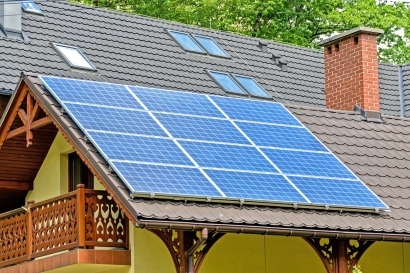
To help assess the potential for rooftop solar to serve in this emerging role, Lawrence Berkeley National Laboratory has released a new study “Modeling the potential effects of rooftop solar on household energy burden in the United States” that evaluates how solar has historically performed in reducing household energy burden.
This study, published as an open-access article in the journal Nature Communications, combines empirical and modeled data for roughly 500,000 residential solar adopters across the U.S. and evaluates energy burden impacts across ownership structure, income group, year of solar adoption, region, and heating fuel types.
Taking off-bill costs and benefits into account, rooftop solar reduced energy burden for 76% of households. The median customer saw bill savings of $1,987 annually, but total net savings of $691 annually when considering off-bill financial impacts.
After rooftop solar installation, energy bills for the entire sample of adopters shifted from a median of 3.3% to 1.3% of household income. However, taking off-bill loan and lease repayment into account muted the downward impact of rooftop solar on a household’s energy burden, while ongoing benefits such as renewable energy certificates for host-owned systems amplified savings.
After taking those factors into account, the median energy burden across all adopters was 2.6% with solar. While the majority of adopters saw an energy burden reduction during the study period of 2021, 24% of households’ cost of solar adoption exceeded the amount of bill savings and incentives available. This occurrence was most prevalent in households with low energy burden (both absent and with solar) due primarily to low electricity prices and consequent low bill savings. However, other relevant impacts include the cost of solar adoption (and thus repayment), solar resource, and available incentives.
Energy burden reductions were more pronounced for low-to-moderate income adopters. Across the 0.5M households in the study sample, 23% were low-income (≤80% of area median income (AMI)), 21% were moderate-income (80-120% AMI), and 57% were non-low-to-moderate income (non-LMI) (>120% AMI). Rooftop solar reduced median energy burden for low-income households from 7.7% to 6.2% (a median savings of $660 annually), while the median energy burden fell from 4.1% to 3.3% ($674) for moderate-income households and from 2.4% to 1.9% ($711) for non-LMI households.
Rooftop solar reduced the incidence of high energy burden by 21% among low-income adopters and 41% among moderate-income adopters. Within the literature, energy burdens above 6% (but less than 10%) are often considered “high”, while those above 10% are considered “severe.” Absent solar, 67% of low-income households and 22% of moderate-income adopter households would have experienced a high or severe energy burden over 6%.
With solar, the number of LMI households experiencing high or severe energy burden decreased 14 and 9 percentage points, respectively. Nevertheless, high (and even severe) energy burden levels persisted for some LMI customers, even with rooftop solar, indicating that solar alone may not be able to fully solve energy affordability challenges for some households. In those cases, additional measures (e.g., energy efficiency) or incentives (e.g., low-income solar programs) may be necessary.
Household energy burden reductions from solar were greatest in the West and Northeast. The impacts of solar on energy burden vary regionally due to underlying differences in income; solar incentives, cost, and resource; energy costs and typical heating fuel; climate; and housing stock.
Across all customers, rooftop solar decreased median energy burden from 3.1% to 2.4% in the West, 4.1% to 3.4% in the Northeast, and 2.8% to 2.6% in the Midwest. Notably, in the South, rooftop solar increased median energy burden from 2.1% to 2.7% (Fig. 3). In part, this is due to the relatively low cost of electricity in the South, which attenuates the bill reduction potential of rooftop solar.

